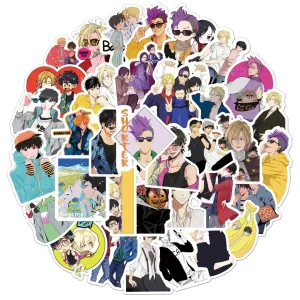Photo Source: Jacek Abramowicz
All eyes are on Nvidia as their stock price rose over 25% in a week in May 2023. Since then, investors have been rushing to put their money on Nvidia.
As a provider of premium AI Superchips, Nvidia is reaping the rewards for its gamble on these up-and-coming AI technologies.
But just how did Nvidia find itself in this position, and how will it alter the future of the gaming industry?
In this article, we discuss the sudden rise of Nvidia — where did they come from, and where will they go next, and how will it alter the future of the gaming industry?
What is Nvidia?
Starting as a semiconductor production company in 1993, Nvidia has since dipped its toes into a variety of industries. Nvidia’s chips are used for:
- Video games;
- AI and deep learning;
- Vehicles and robotics;
- Smartphones and PCs;
- Crypto-mining.
Primarily, Nvidia rose to popularity with the release of the GeForce 256, the first-ever Graphics Processing Unit (GPU). Without GPUs, modern computing would still consist of slow and pixelated 8-bit graphics.
What’s Happening to Nvidia Right Now?
On May 24, 2023, Nvidia released an earnings report as per usual, except this quarter was different. Due to the AI boom, Nvidia predicted 50% higher future sales than Wall Street analysts did, drawing the eyes and checkbooks of investors.
Stock Prices Soar in May
The jump was only exacerbated after the announcement of their AI-focused GH200 Grace Hopper Superchip on the 28th. By Tuesday the 30th, the company’s value spiked to over $1 trillion, surpassing the likes of Facebook and Tesla.
A huge part of this success can be attributed to Nvidia’s CEO and founder, Jensen Huang.
Jensen Huang’s Gamble Pays Off
Realizing the potential applications of AI technologies over a decade ago, Huang focused on putting Nvidia at the center.
Almost a decade since the release of their first deep learning supercomputer, the DGX-1, Nvidia has cemented itself at the eye of the AI storm. But this wasn’t Huang’s first risky gamble, many of which almost bankrupted the company.
Source: Christian Wiediger
How Nvidia Got to Where They Are Now?
Huang, who immigrated to the US from Taiwan at a young age, launched Nvidia in 1993 with Curtis Priem and Chris Malachowsky. To understand their current rise, it helps to go back and look at the inception of Nvidia.
Born Out of a Californian Condo
Huang, Priem, and Malachowsky were engineering students at Oregon State University. Dreaming of 3D graphics and other inventions, the trio set up shop in a condo in Fremont, California.
Nvidia got its name from NV (“Next Version”) and “invidia”, meaning “envy” in Latin. Nearing bankruptcy in 1999, Nvidia released the GeForce 256, the first programmable graphics card, launching them into stardom.
Soon after, Nvidia became the exclusive provider of GPUs for Microsoft’s first Xbox, thrusting the company into the public eye for the first time.
Huang’s Habit of Ambitious Projects
Nvidia’s foray into AI was hardly its first step into uncharted territory. In 2014, Nvidia shifted its focus away from its Tegra line of mobile processors. After Apple released its 64-bit A7 SOC, the Tegra processor line was quickly made redundant.
Huang admits this mishap was one of many gambles that have endangered the company multiple times. Yet, without this reach-for-the-stars attitude, Huang and Nvidia wouldn’t be at the very forefront of AI like they are now.
The Explosion of ChatGPT and the A100
Whether or not you’ve heard of Nvidia, you have to have heard about ChatGPT. This AI-based chatbot has blown up, seeing over 1 billion visits in February this year. At the core of the supercomputer that powers ChatGPT is… you guessed it — Nvidia.
Built with over 10,000 Nvidia A100s, the ChatGPT supercomputer gave Nvidia the exposure it needed. This provided priceless reputational benefits and put Nvidia in the perfect place to capitalize on the AI chip boom.
Where Will Nvidia Go Next?
Millions of gamers are excited to see how Nvidia can bring its new AI technologies to the gaming sector. While Nvidia claims its loyalty to the industry, detractors see the current surge as Nvidia’s change of direction.
Gaming-Focused But Fully Invested in AI
Although revenue in the sector has been waning, Nvidia has pledged to continue its interest in gaming. Nvidia announced in April 2023 that it would be embedding AI-powered features into its new mid-range RTX 4070.
This AI chip allows for hyper-realistic and dynamic gameplay. Yet, as revenue from gaming chips decreases, some worry — will Nvidia step out of gaming to go all-in on AI? While understandable, it’s unlikely to happen anytime yet.
CHIPS Poses a Threat to Chip Manufacturing
2022 saw the introduction of CHIPS, the US government’s attempt at “Creating Helpful Incentives to Produce Semiconductors.” Essentially, CHIPS is aimed at bringing semiconductor manufacturing to the US to compete with China.
Unluckily for Nvidia, their chip-manufacturing plants are run in Taiwan by the Taiwanese Semiconductor Manufacturing Company (TSMC). Nvidia plans to swerve this new bill as new TSMC factories are opened in Arizona, producing chips as of 2024.
Another dilemma Nvidia faces due to CHIPS is its trade partnership with China, which accounts for a quarter of total sales. Restrictions have already lowered sales and will prove to be a divisive issue in the future.
What Does All of This Mean For Gamers?
For the uninitiated, it may seem like Nvidia’s work in the AI industry is unrelated to its gaming products. Gamers should know Nvidia’s technology and products will only diversify and improve over the coming years.
AI can be implemented into so many facets of gaming, including:
- Lifelike NPCs who learn and play alongside you;
- Generative AI creates entire virtual landscapes;
- Levels that adapt and change as you progress;
- A growing ecosystem of AI-gaming careers.
So not to worry — gaming environments will only get more immersive as the lines between AI and video-game engineering are blurred.
If you’re a seasonal gamer, ensure your session is anonymous and secure with a reliable VPN. Browse companies like Surfshark and others to pick the one that suits you the most.
Conclusion
Nvidia touched the heavens in May 2023, as its company value briefly soared to the level of Microsoft and Google.
If they can capitalize on this success, Nvidia may play an integral role in the future of AI and the gaming industry.













